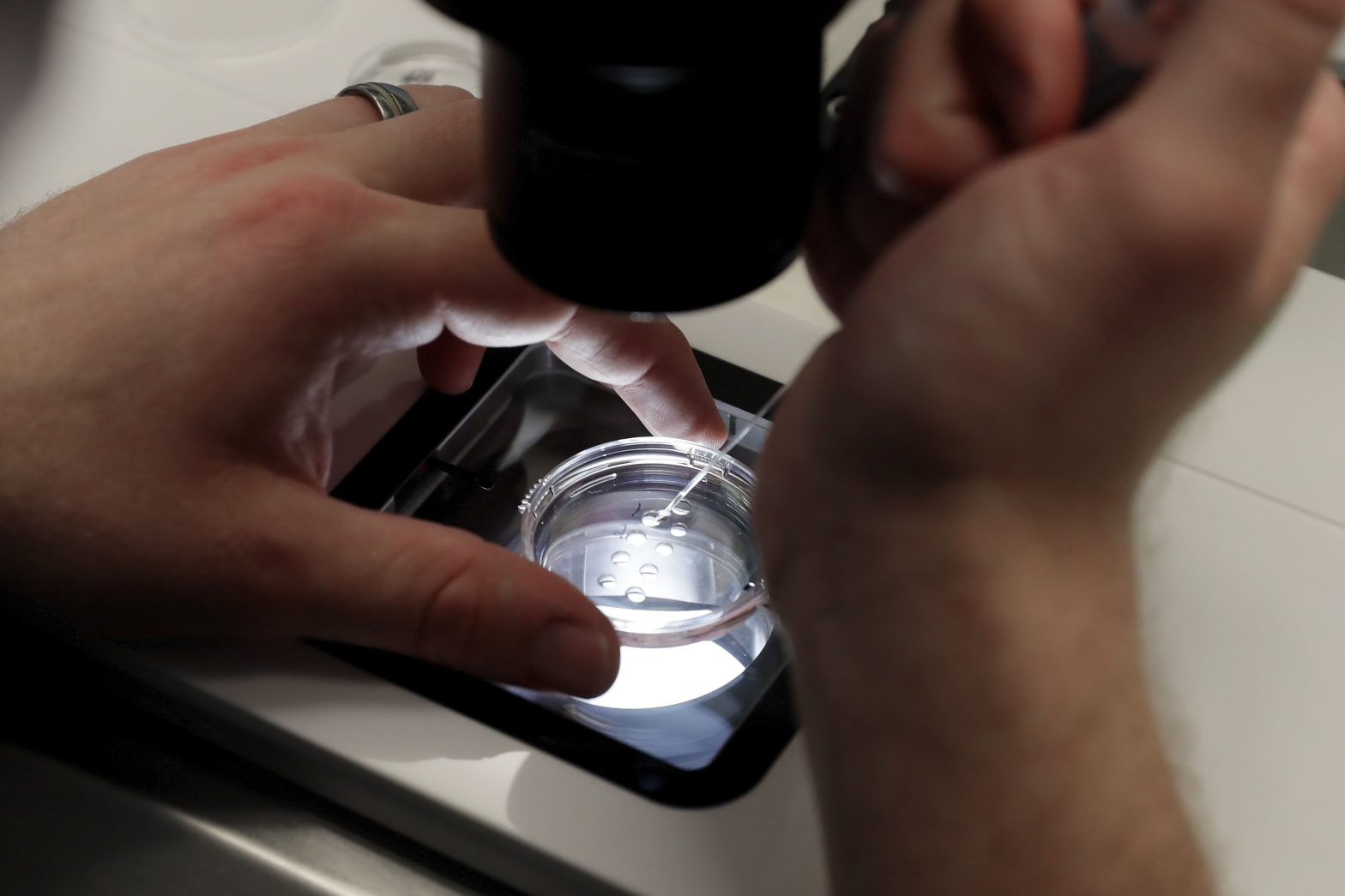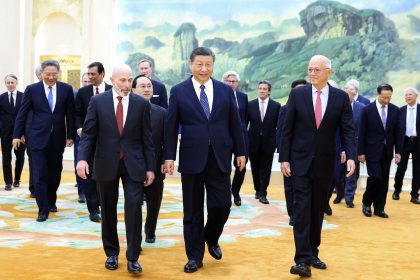Alabama’s Embryo Ruling and the Links to Adoption in America
COMMENTARY

This February the Alabama Supreme Court ruled that frozen embryos are children and thus need to be protected. When embryos are destroyed, which is inevitable during standard in vitro fertilization procedures, this now constitutes murder in the state of Alabama. In the wake of the Alabama ruling there has been a massive wave of responses from all sides of the debate around which lives deserve constitutional protection.
This wave is fueled even more as we are processing the societal, economic and political impacts of the 2022 Dobbs decision.
Recent state rulings against reproductive rights, made predominantly by men (the Alabama Supreme Court is comprised of seven men and two women), center on the welfare of a being that has yet to be born, at the cost of all others. Alabama Chief Justice Tom Parker’s opinion is an especially fiery example of the fearmongering and shaming that is coming out of this line of argumentation.
Parker wrote, that an unborn life “cannot be wrongfully destroyed without incurring the wrath of a holy God, who views the destruction of His image as an affront to Himself.” Parker’s binary logic situates the welfare of the unborn being as taking precedence over the life, circumstances and welfare of those involved with making that unborn life. According to Parker, to argue otherwise is literally an affront to God.
I have struggled with fertility. My spouse and I were only able to conceive of our first child with the assistance of artificial insemination. This was because I suffer from severe endometriosis, a condition I have minimal power over yet it has enormous power over me and my path as a mother.
One thing my fertility journey taught me was that fertility autonomy is power.
The Alabama Supreme Court ruling on embryos is a harbinger of an even more caustic weaponization against fertility autonomy. As a direct result of this ruling, people who are struggling to control their fertility through IVF and other reproductive assistive processes are being cut off from fertility assistance.
One of the outcomes of this will inevitably be an increase in adoptions.
I am adopted. I was relinquished at birth by my birthmother, a young woman who was told by her community that her pregnancy was a problem for her and her community. Women exist in an impossible paradox of societal shame surrounding both fertility and infertility. In these reproductive rights debates fertility has become weaponized against women. Adoption is a tool within this weaponization against fertility autonomy.
The whole project of adoption is contingent on making value judgments about a pregnancy — about who is a worthy mother and who is not. It is the method by which babies are transferred from those who are deemed unworthy of mothering to those who are deemed worthy.
The historical foundation of adoption in the United States is defined by abusive practices that expose our culture’s continuing deep distrust of women’s power through fertility, particularly poor women, indigenous women, women of color and the paradoxical threat and power their fertility poses to societal norms. Millions of women had their babies stolen from them, have been coerced to relinquish their babies and have been forcibly sterilized so that they do not have babies.
During the infamous “Baby Scoop Era” between 1942 and 1970, domestic adoption rates skyrocketed from 45,000 to 178,000 adoptions per year. Demand for adoptable babies in these post-war years was at an all-time high and adoption practices were defined by abusive coercive practices of shaming young, unwed mothers into relinquishing their newborns.
What helped facilitate a national transition toward family separation, particularly the belief that separating the newborn baby from its birth mother and coercing relinquishment was the best scenario for an illegitimate pregnancy, was an “evolution in the perception of unmarried mothers among social workers, changing from ‘seduced and abandoned’ to ‘feebleminded’ and then to ‘sex delinquents.’”
Social work professionals began to see unmarried mothers as dangerous rather than as endangered. And their babies had to be saved from them. They were told they were unworthy of being mothers. At the same time, women who were deemed worthy of mothering, middle-class White women, repeatedly heard the message that they were of less value if they chose not to mother or could not have babies.
Fertility on the part of the wrong, unworthy mother, has always been considered a threat to American society.
One of the starkest examples of this is our nation’s long, dark history of forcibly sterilizing girls and women. Every state in the nation had forced sterilization programs, and 30 states had eugenics-inspired laws, leading to the sterilization of over 60,000 U.S. citizens. In fact, California, where I was born, led the nation with more than 21,000 sterilizations. Virginia was second with 8,000, and North Carolina came third.
But what makes the North Carolina program stand out is that it was the longest and most aggressive of all the state-run programs. In 1974, North Carolina ended its decades-old program of forcibly sterilizing people, predominantly women and girls of color, under the justification of easing the financial burden on state-run public services, as opposed to moral or ethical reasons. By 1960, 60% of those sterilized were Black, and 99% were female. At the culmination of this horrific and unjust sterilization program, several thousand citizens had been sterilized under the pretext that it was “good for them and good for society.”
In the 1960s and 1970s more than 41,000 Indigenous women were sterilized by Indian Health Service doctors. The forced removal of Indigenous babies and children through the Indian Adoption Project, followed by the coercive sterilization agenda of the IHS, exposed the devastating narrative propagated about Indigenous families, particularly Indigenous women.
All American women live within the tension of this paradox, which allows only a small window of acceptable motherhood, acceptable womanhood.
All American women’s fertility is being assessed for its threat or value to society.
The 2022 Dobbs ruling represents the intricate connection between adoption and fertility. In his opinion, Justice Samuel Alito directly tied the shrinking supply of adoptable babies to the justifications for abolishing reproductive rights for women when he wrote, “Americans who believe that abortion should be restricted press countervailing arguments about modern developments. They note that attitudes about the pregnancy of unmarried women have changed drastically; that federal and state laws ban discrimination on the basis of pregnancy; that leave for pregnancy and childbirth are now guaranteed by law in many cases; that the costs of medical care associated with pregnancy are covered by insurance or government assistance; that states have increasingly adopted ‘safe haven’ laws, which generally allow women to drop off babies anonymously; and that a woman who puts her newborn up for adoption today has little reason to fear that the baby will not find a suitable home.”
Alito was attempting to paint an easy, unproblematic picture of pregnancy in America, claiming that pregnant women are not discriminated against in the workplace, that women have access to affordable prenatal care and that it is easy and simple to relinquish a newborn through safe haven laws.
Our nation’s history with adoption and family social welfare directly contradicts the picture Alito paints. Millions of pregnant women, particularly those of color and those locked in cycles of poverty, experience none of these “modern developments.” Currently, the states that have banned abortions also have the highest rates of uninsured women and the weakest maternal support for pregnant women. Requiring women to endure forced pregnancies with a false promise that they will be cared for and that relinquishing their babies will be simple and easy, that they can walk away from the experience unscathed, is preposterous, damaging and denies the historical reality of abusive adoption practices.
Domestic adoptions in the United States have been on a consistent decline since their peak in the early 1970s, prior to the passage of the 1973 Roe v. Wade ruling. As women gained autonomy over their bodies, many of the circumstances that facilitated a booming adoption market — forced pregnancies, lack of prenatal care and community support, and personal financial and social crises connected to unplanned pregnancy — were mitigated. And the domestic adoption market lost its supply chain. Adoption practices and fertility autonomy are inextricably linked.
The Alabama Supreme Court ruling on embryos is a harbinger of an even more caustic weaponization against fertility autonomy and the dehumanization of women and mothers. As women lose access to reproductive options through IVF and other reproductive assistive processes, we are looking at a surge of adoptions, just as Alito hoped.
We are now living in a dystopian reality where pregnant women are losing the option to terminate a pregnancy, forced to carry a baby to term without vital social and medical welfare resources. People who are deemed incapable of mothering — immigrant mothers, mothers experiencing poverty — are losing support, resources and rights to their children through abusive family separation policies.
Simultaneously, people who are struggling to control their fertility through IVF and other reproductive assistive processes are being cut off from fertility assistance. This will inevitably lead to a shift in the supply and demand equilibrium of adoption markets.
Again, this was just what Alito hoped the Dobbs decision would do.
As we look toward a future in which women have deteriorating control over their own fertility, we will likely see some significant and impactful changes in adoption transactions in America.
At their absolute peak in 1970, 175,000 babies and children were adopted in the United States. By 2012, that number had dropped to 125,000. The passage of the Roe v. Wade decision in 1973, federally protecting all women’s access to reproductive autonomy, had a huge impact on the precipitous decline of adoptions over the past 50 years. The reversal of the Roe decision in 2022 is already leading to an increase in birthrates in states that are implementing abortion bans.
With the confluence of increased birth rates by women who have been stripped of their reproductive rights and restrictive access to fertility assistance such as IVF, leaving prospective parents to seek alternative options to starting families, it is plausible that we will see a surge in abusive practices of coercing pregnant women to relinquish their babies. Market forces have always impacted adoption practices. When there is an increase in demand for adoptable babies, we know from history that political, economic and social systems have engaged in horrifying practices to create supply.
In this moment it is vital that we understand the predominantly abusive practices that have defined the history of adoption in America. If we want to understand what is happening in these current battles over reproductive rights in America at this precarious moment, we must include our complicated history of adoption.
Rebecca Wellington, Ph.D., is a writer, historian and educator. Wellington is the author of the forthcoming book “Who Is a Worthy Mother? An Intimate History of Adoption,” publishing April 9 through University of Oklahoma Press. She teaches at the University of Puget Sound in the School of Education. She has taught high school social studies, as well as undergraduate courses and graduate level courses in education history and curriculum and instruction. Wellington can be reached on LinkedIn and media inquires can be made via email.
























